Deforestation and Reforestation: How the U.S. and Wood Industry Protect our Forests
In May 2008, the Brazilian government released photographs of one of South America’s few remaining uncontacted, indigenous tribes taken near the Brazil/Per border. They took photos to prove the tribe’s existence and help protect the land. Over 50% of the world’s uncontacted tribes live in Brazil or Peru, according to Survival International.
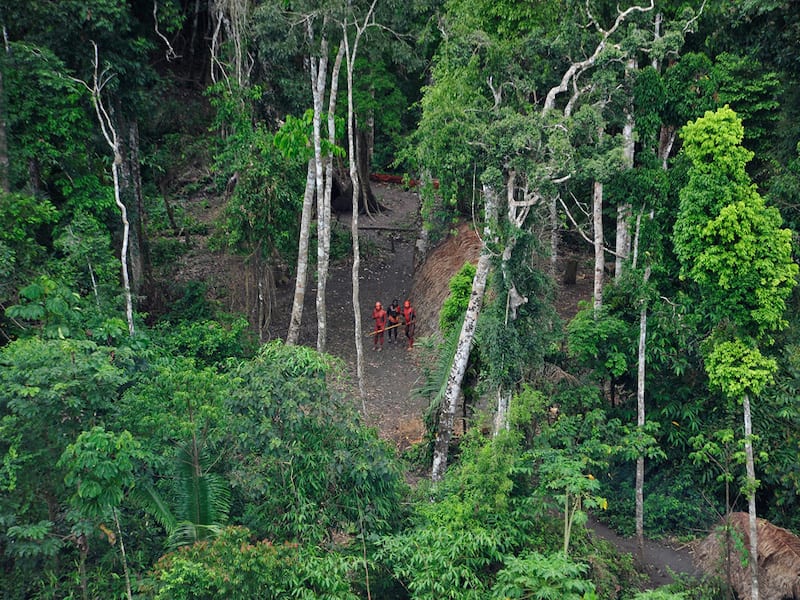
Gleison Miranda/AFP/Getty Images
Peru has one of the largest, commercially viable mahogany sources in the world; and the oldest trees are near the uncontacted tribes. Survival International Director Stephen Corry believes these tribes will become extinct if their land is not protected.
We lose an estimated 18.7 million acres of forest every year due to unsustainable logging, cattle ranching, oil drilling, mining, fires, clear-cutting for agriculture, and development, according to the United Nations’ Food and Agriculture Organization. That’s an area roughly the size South Carolina. Put another way, we lose 36 football fields of forest every minute.
The impact of deforestation
Deforestation contributes to climate change. As they grow, trees absorb carbon dioxide (Co2) from the atmosphere, storing the carbon while producing oxygen. This reduces greenhouse gases and improves air quality. Deforestation undermines this function, resulting in an estimated 10-15% of all greenhouse gas emissions, according to various scientists and organizations including the Union of Concerned Scientists and the Intergovernmental Panel on Climate Change
Deforestation endangers animal habitats. Forests cover 31% of the planet’s land area, providing homes for many of the world’s most threatened and endangered animals.
Deforestation contributes to soil erosion and threatens our quality of life. Without trees to anchor the soil, it can wash or blow away, and vegetation is less likely to grow. Silt enters lakes, streams, and other water sources, decreasing water quality and contributing to poor health. More than 1.6 billion people rely on food, fresh water, clothing, traditional medicine, and shelter provided by forests.
Deforestation impacts the water cycle. Trees absorb rainfall and produce water vapor that’s released into the atmosphere. Over half the water in the Amazon’s ecosystem is held within the plants, according to the National Geographic Society.
Unsustainable logging is just one of many contributors to deforestation. However, the U.S. government and wood flooring and building materials industries are helping promote responsible forest management, combat illegal logging, and protect forested areas.
How the U.S. government promotes sustainability
The mission of the U.S. Forest Service, a division of the U.S. Department of Agriculture, is “to sustain the health, diversity, and productivity of the nation’s forests and grasslands to meet the needs of present and future generations.” Its biggest challenge and responsibility is establishing forests on lands that have been affected by natural catastrophes, excessive cutting, fire, insects, or farming practices of the last 50 years.
The Forest Service is also committed to legislation that supports its mission, including those described below.
- The LaceyAct passed in 1900 banned trafficking of protected wildlife. It was amended in 2008 to include plants and plant products like timber and paper.
- The Organic Administration Act of 1897 provided for establishing national forests, improving and protecting forests, securing favorable conditions for water flows, and furnishing a continuous supply of timber.
- The Weeks Law of 1911 provided for the acquisition of forested, cut-over, or denuded lands within watersheds to regulate the flow of navigable streams or for timber production. This enabled the Secretary of Agriculture to conduct reforestation work on the acquired lands.
- The Knutson-Vandenberg (K-V) Act of 1930 provided for the establishment of forest tree nurseries and authorized the Secretary of Agriculture to require timber sale purchasers to make deposits to cover the cost of reforestation and related work within timber sale boundaries. The K-V Act is a primary means for ensuring reforestation in timber sale areas.
The wood flooring industry and building and construction industries work within these legal frameworks and beyond to ensure the availability of wood for the future.
How the industry promotes sustainability
Upon arriving at the mill, a giant mobile unloader grabs the entire truckload of trees and stacks it into long piles called log decks. These log decks are periodically sprayed with water to prevent drying out and shrinking.
Logs are then picked up from the log deck and placed on a chain conveyor that brings them into the mill. In some cases, the logs are “debarked,” meaning the outer bark of the log is removed with either sharp-toothed grinding wheels or a high-pressure water jet. This bark is pulverized and used to fuel the mill’s furnaces or sold as garden mulch.
As the logs make their way into the mill on a chain conveyor, a large circular saw called a bucking saw cuts them into predetermined lengths.
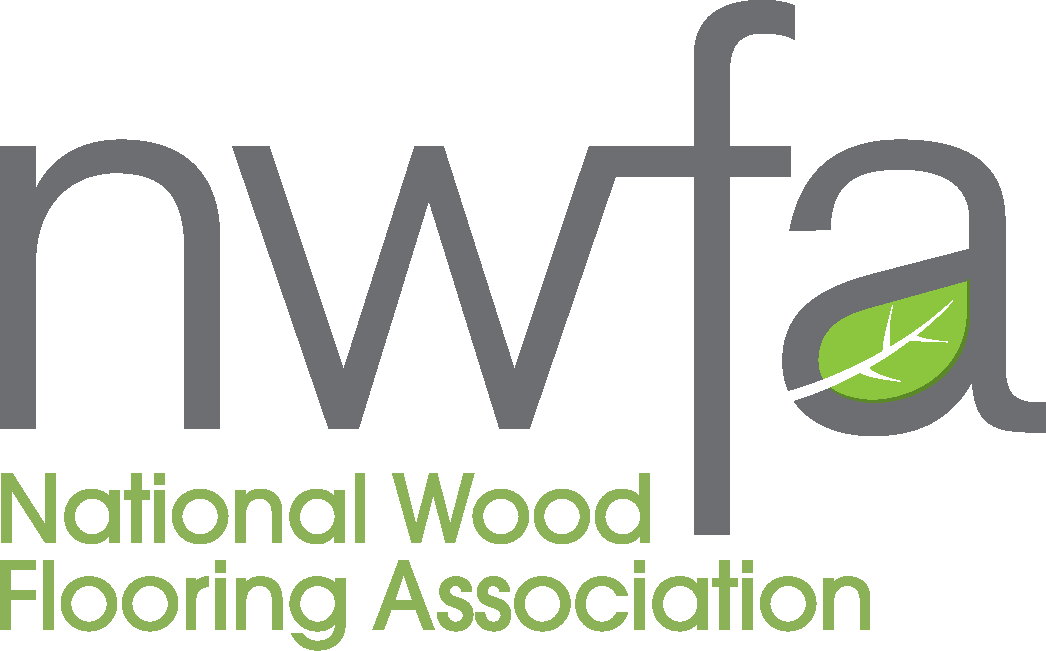
The National Wood Flooring Association
The National Wood Flooring Association (NWFA), the trade association for the wood flooring industry is committed to sustainability. In addition to providing industry connections, training, and information about the wood flooring industry, NWFA supports and promotes aggressive legal wood regulation and environmentally responsible wood flooring practices.
NWFA’s Responsible Procurement Program (RPP) initiative is committed to producing and promoting wood floors only from environmentally and socially responsible sources. The RPP was conceived by NWFA and SCS Global Services, the Forest Stewardship Council U.S., and the Rainforest Alliance TREES US Program.
NWFA also provides education and support for the ICC/ASHRAE 700-2015 National Green Building Standard to help contractors design, construct, or remodel any residential project to the most current sustainable and green building criteria available.
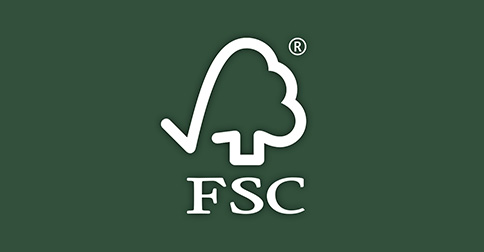
The Forest Stewardship Council
The United States Forest Stewardship Council (FSC®) is an independent, non-governmental, not-for-profit organization that was established to promote responsible management of the world’s forests. Established in 1993, FSC® is widely regarded as one of the most important initiatives in promoting responsible forest management worldwide.
The FSC® stamp of approval indicates that forest operations meet 57 criteria which include protecting local wildlife, preserving diversity, protecting air and water quality, minimizing the use of toxic chemicals, and letting loggers unionize. The FSC® label provides a credible link between responsible production and consumption, enabling consumers and businesses to purchase materials that benefit people and the environment, as well as providing ongoing business value.
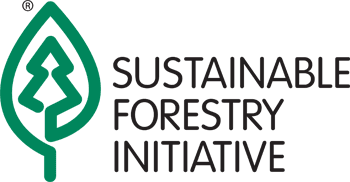
The Sustainable Forest Initiative
Based in Ottawa, Ontario and Washington, D.C., SFI Inc. is an independent, nonprofit organization dedicated to promoting sustainable forest management. SFI administers a certification program to promote standards covering protecting biodiversity, species at risk, and wildlife habitat; sustainable harvest levels; protection of water quality; and prompt regeneration. Certification standards are revised and updated every five years based on input from the public and private landowners, forest sector representatives, Indigenous communities, conservation groups, industry, academia, and government officials.
SFI has certified more than 300 million acres in the U.S. and Canada, and millions more are positively impacted by the SFI Fiber Sourcing Standard. Additionally, SFI oversees its Forest Partners® Program which aims to increase the supply of certified forest products; Conservation and Community Partnerships Grant Program which funds research and community building; and Project Learning Tree® which educates teachers and youth about forests and the environment.
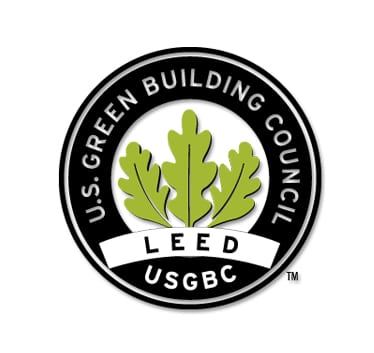
Green Building Council
On April 5, 2016, the U.S. Green Building Council (USGBC) issued a Leadership in Energy and Environmental Design (LEED) pilot alternative compliance path (ACP) designed to screen out illegal forest products from LEED buildings. Still, in the testing phase of becoming a credit, the ACP will ultimately become a prerequisite that applies to all LEED projects following an affirmative vote of USGBC membership. The ACP pilot recognizes all certified sources—FSC, PEFC, SFI and ATFS and programs—and will apply to all LEED v4 rating systems including Homes v4 and to all LEED 2009 rating systems.
Other certification agencies include the Canadian Standards Association (CSA), first national sustainable forest management standard in the world, and the Switzerland-based Programme for the Endorsement of Forest Certification (PEFC), an international nonprofit, non-governmental organization.
Wood…a sustainable building material.
The large cut pieces from the head rig saw, are laid flat, and moved by chain conveyor to a series of bandsaws where they are cut to the required widths, and the outside edges are trimmed square. The smaller diameter logs are fed through a series of bandsaws that cut them into 1”, 2”, or 4” thick pieces in one pass. Smaller pieces that don’t need further cutting may pass through a chipper which further grinds the uneven edges square.
Drying or Seasoning
Wood is the only naturally renewable mainstream building material, organic by nature. Since it comes from natural materials, wood can be replanted for future use and enjoyment.
The U.S. typically practices sustainable forestry, managing and reforesting woodlands after harvest to develop new forests. In fact, Americans plant approximately 1.6 billion trees every year. About half of these are planted by forest product companies, even though these companies own only 14% of all U.S. timberland. Of course, millions of hardwood trees regrow naturally. As a result, the growth of the forests surpasses the harvested number of trees by 33%.
Importing wood from illegal sources has been banned in the U.S. since 2008. Sustainable wood should carry the FSC® seal and a “chain of custody” number which makes it relatively easy to trace back to its source. Also, FSC-certified wood does not come from clear-cutting or from forests where “high conservation values” are threatened. Selective harvesting protects the soil and the forest ecosystem while clear-cutting leaves areas open to insect infestations, disease, and mudslides, and contributes to climate change.
Carpets are mainly constructed from synthetic materials that undergo chemical treatment which can be harmful to the environment. Plus, carpet lasts only 15 to 20 years, then goes into a landfill. Similarly, laminate flooring is created by bonding various composite materials and melamine resin, often using toxic glues containing formaldehyde and other harmful materials. Once installed, they continue to emit toxic substances, threatening the health of inhabitants.
Most North American hardwood flooring manufacturers adhere to strict industry standards, producing flooring with low amounts of harmful VOC (volatile organic compounds) emissions and using glues free from formaldehyde. Most importantly, wood floors can last a lifetime if properly maintained, repaired, and refinished.
Maybe the wood floors we’re installing today will be the reclaimed and refinished wood in the future.
Planing
The dried pieces of lumber are passed through planers, where rotating cutting heads trim the pieces to their final dimensions, smooth all four surfaces, and round the edges.
Grade Stamping and Banding
Each piece of lumber is visually or mechanically inspected and graded according to the number and location of knots, cracks, and natural marks. The grade is stamped on each piece, along with information about the moisture content, and a mill identification number. The lumber is then bundled according to the type of wood, grade, and moisture content—and the bundle is secured with steel bands. The bundles are loaded on a truck or train and shipped to a lumber yard for resale to customers.
Reforestation and Sustainability
America’s forests provide a rich habitat for wildlife, diverse plant and animal communities, clean water, beautiful scenery, and recreational opportunities. But natural catastrophes, excessive cutting, fire, insects, and historical farming practices require that we protect this valuable resource.
The roots of forestry regulation and preservation date back to 1876 when Congress requested that the Department of Agriculture assess the state of the forests in the United States. Today, the USDA Forest Service’s mission is to sustain the health, diversity, and productivity of the nation’s forests and grasslands to meet the needs of present and future generations. One of its top priorities is managing growth through reforestation programs like those created by the Knutson-Vandenberg Act of 1930. This act established forest tree nurseries and required timber sale purchasers to make deposits to cover reforestation costs and related work within timber sale areas.
Responsible wood flooring companies understand the delicate balance between man and the environment. Be sure to ask about certifications and their commitment to sustainability before choosing any manufacturer, product, installer, or a wood flooring professional.
